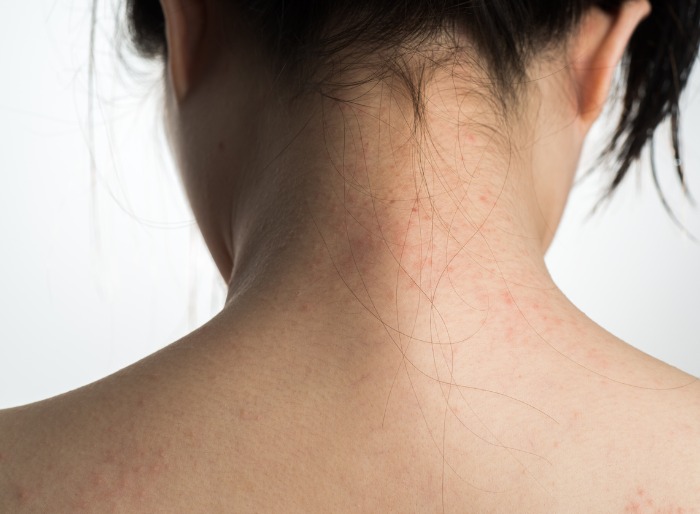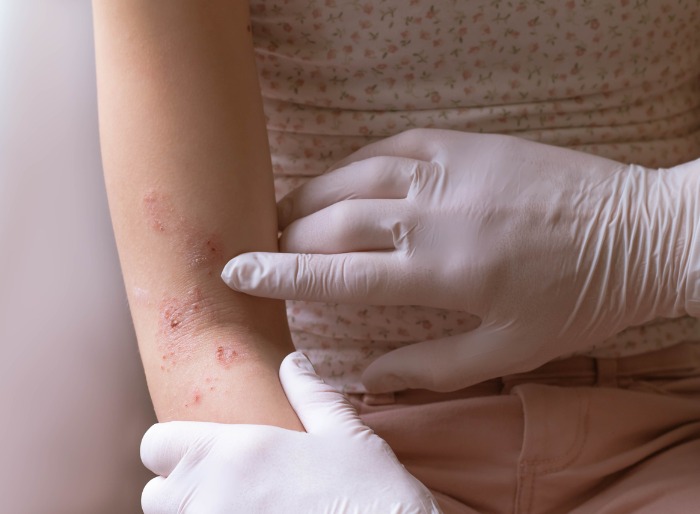Allergic contact dermatitis is a common skin condition caused by a reaction to an allergen coming into direct contact with a person’s skin. While allergic contact dermatitis isn’t life-threatening or contagious, it can be extremely uncomfortable, often resulting in an itchy rash, swelling, and/or blisters. To effectively prevent and treat allergic contact dermatitis, it’s imperative to identify what’s causing your reaction. Our Gainesville dermatology specialists offer comprehensive dermatology services and can help diagnose and treat allergic contact dermatitis.
Dermatology Associates is a full-service dermatology practice dedicated to providing the Gainesville community with high-quality medical dermatology services. Contact us today to schedule an appointment with a dermatologist in Gainesville!

What Are The Symptoms Of Allergic Contact Dermatitis?
Allergic contact dermatitis forms when a person’s skin is exposed to a reaction-causing allergen. This rash could either develop within hours or days of exposure, making it tricky to identify the cause of the reaction. However, when symptoms of allergic contact dermatitis start presenting, a person can consult with a dermatology specialist for help identifying the cause of their reaction. The following are some common symptoms of allergic contact dermatitis.
- Red, Inflamed Rash
- Severe Itchiness
- Scaly, Cracked, Or Dry Skin
- Bumps Or Blisters That May Ooze & Crust
- Swelling
- Burning Sensation
- Tenderness
What Causes Allergic Contact Dermatitis?
When a person’s skin is exposed to a substance or material they’re allergic to, their immune system responds, mistaking the allergen for a harmful substance and deploying antibodies to the affected area. The body then releases chemicals, including histamine, resulting in an itchy rash. Once your body develops an allergy, even a small amount of exposure can cause a reaction. Some common allergens people that may cause allergic contact dermatitis include the following.
- Plants, Such As Poison Ivy
- Nickel And Other Metals
- Personal Care Products (Deodorant, Detergent, Body Wash, Etc.)
- Medications (especially Neosporin/Neomycin)
- Pet Dander
- Solvents
How Do Dermatologists Diagnose Allergic Contact Dermatitis?
Your dermatologist may be able to help you diagnose the reaction-causing allergen by discussing your symptoms, examining the affected area, and questioning you about exposure to new products, plants, or other trigger substances. A patch test is another common method of diagnosing allergic contact dermatitis. During this test, a series of patches, containing potential allergens, will be applied to a patient’s back and then removed two to four days later. After this, your dermatologist will check for reactions to determine if allergic contact dermatitis could explain their rashes and identify a possible trigger substance.

Allergic Contact Dermatitis Treatment
If the trigger substance is diagnosed, allergic contact dermatitis can be avoided. Once the allergen has been identified, a dermatologist will inform the patient about their allergies, give them advice on avoiding their triggers, and avoid products containing the substance. After making necessary changes and taking preventative measures, patients can expect to see an improvement. Additionally, dermatologists may prescribe medications to relieve symptoms during this period.